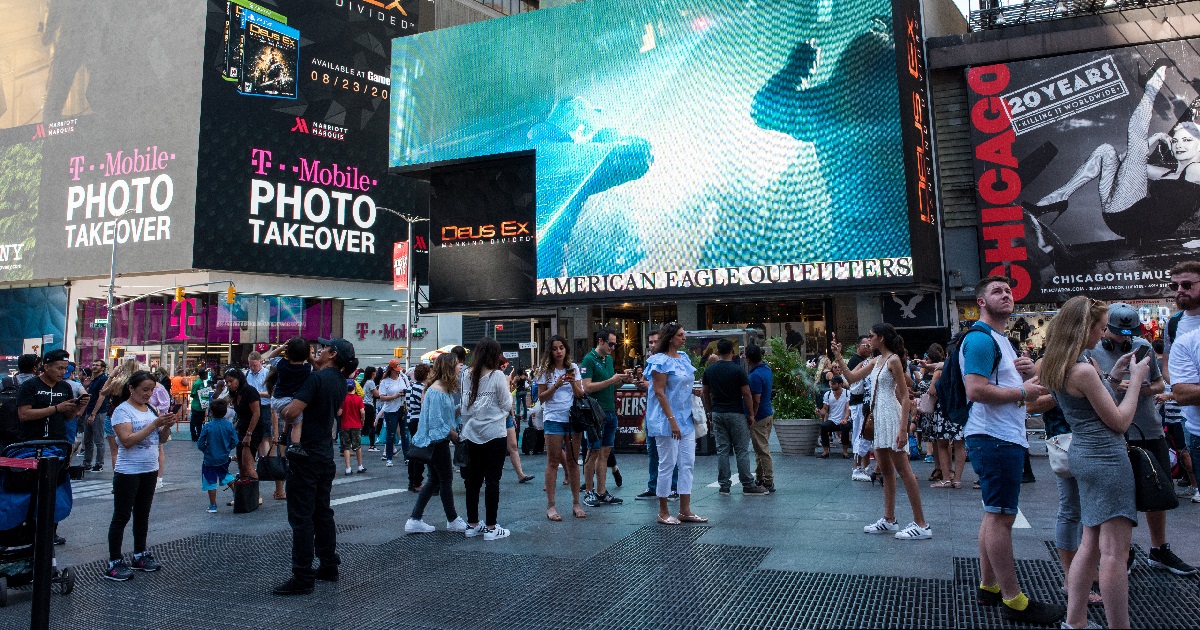
Display Advertising, Social Media Advertising
MyTradeZone | November 28, 2023
MyTradeZone.com, a trade and Social Networking for businesses, is pleased to announce its upcoming visit to Hong Kong from December 4th to 8th, 2023. Bachir Kassir, founder of MyTradeZone, will join a delegation of American companies to Hong Kong as part of a U.S. Department of Commerce Certified Trade Mission organized by IBS Global Consulting with the support of the Hong Kong Trade Development Council and the U.S. Commercial Service.
The delegation, comprising a diverse group of American companies, aims to foster cross-border partnerships, explore export opportunities, and deepen economic ties between the United States and Hong Kong.
The visit to Hong Kong presents an exciting opportunity for MyTradeZone.com to expand its global reach, tap into new markets, and establish key connections with Hong Kong's dynamic business community and trade associations. With Hong Kong's strategic location as a gateway to the Asia-Pacific region, robust financial services sector, and reputation as a major international trade hub, this visit holds immense promise for American enterprises looking to navigate the Asian market.
Led by Tonya McNeal-Weary, Managing Director at IBS Global Consulting, the delegation will engage in a series of high-level meetings, networking events, and industry-specific forums during the five-day visit. These activities are designed to facilitate mutually beneficial partnerships between U.S. and Hong Kong businesses across various sectors.
[MyTradeZone.com] is a disruptive business networking platform, and is like an always open trade show:
• Businesses: Add company profile page. Showcase products & services. Network locally and around the world
• Event Organizers, Trade Associations, & Networking Groups: Provide value-added offering to members & sponsors in a public or private setting
• Creators & Group owners: Monetize your creations via peer-to-peer payment enablement
• Advertisers and Marketers: MyTradeZone's B2B search engine offers highly targeted and cost-effective advertisements to both buyers and sellers
• Business Professionals: Grow your professional network, chat, connect, follow, takes notes, share and collaborate
As an official member of the delegation, MyTradeZone will have the opportunity to gain firsthand insights into Hong Kong's business landscape, explore regulatory frameworks, exchange best practices, and forge lasting relationships with key stakeholders. Additionally, the itinerary includes tailored site visits to cutting-edge facilities and industrial parks, showcasing Hong Kong's commitment to innovation and entrepreneurship.
The visit to Hong Kong aims to enhance trade cooperation and seeks to highlight the enduring friendship between the United States and Hong Kong. As both economies continue to recover from the challenges posed by the global pandemic, this visit becomes even more crucial in reinvigorating trade ties and promoting long-term economic growth.
About MyTradeZone.com
MyTradeZone is a social networking platform for businesses. We are working on the next thing to disrupt business networking. MyTradeZone is a forward-thinking B2B media technology company reshaping how businesses connect and network. MyTradeZone's B2B search engine offers highly targeted and cost-effective advertisements to both buyers and sellers. MyTradeZone is also a perfect companion offering to trade show organizers and networking groups offering value added benefits to both members and sponsors.
Read More

Ad Tech and Martech, Advertiser Platforms
PR Newswire | February 23, 2024
Jasper, one of the world's biggest generative AI app companies, has announced that it has reached an agreement to acquire Clipdrop, an AI image creation and editing platform, from Stability AI. This acquisition signifies a significant step forward in Jasper's capacity to deliver the most comprehensive, multimodal copilot for enterprise marketing teams.
Clipdrop is an image creation and editing platform used by millions of creative designers and brands worldwide. Founded in 2020 by Google alumni Cyril Diagne, Damien Henry, and Jonathan Blanchet, Clipdrop enables users to edit existing images, create new ones, and develop an expansive number of variations in size, detail, and style. For marketers and brand leaders, this technology can be a catalyst for accelerating their ad strategies and developing on-brand creative.
"Marketing is visual," said Timothy Young, CEO of Jasper. "The addition of Clipdrop to Jasper will advance our vision to be the most comprehensive end-to-end marketing copilot in the industry, powering all the formats, channels, and functions enterprise marketing teams need. A copilot this robust will enable the enterprises we serve to go beyond simple AI prompts to achieve more personalized marketing, better informed automation, and improved optimization across their entire strategy."
The Clipdrop team will join Jasper effective immediately and continue to lead research and innovation on multimodality in Jasper from their headquarters in Paris, which has become a hub of AI innovation in Europe. With this acquisition, Jasper expands its footprint to Europe and plans to continue to invest there from both a talent and customer acquisition standpoint. The company is eager to contribute to Paris's vibrant AI community.
"Jasper has been a valued partner, leveraging Stability AI models for many years," said Emad Mostaque, CEO of Stability AI. "We're thrilled to see Clipdrop expand their offering by joining forces with Jasper. We will continue to partner with Clipdrop on research and deliver our cutting-edge models to their platform."
"We are excited about what Clipdrop technology can do inside Jasper's copilot for marketing teams," said Damien Henry, Clipdrop co-founder. "There are natural synergies between the two companies and a clear focus on creating the best multimodal platform for marketers. We can't wait to get started." In addition to leading further development of AI-assisted image creation and editing, Damien Henry will play a larger leadership role in research and innovation for the entire Jasper product.
The acquisition of Clipdrop closed on February 20, 2024. Business customers will be able to access it through the Jasper API immediately, over time the functionality will be more deeply integrated into the copilot. Individuals can still purchase Clipdrop as a standalone product via Clipdrop.co
Read More

Brand Marketing, Advertiser Platforms
PR Newswire | February 26, 2024
Gupshup, the world's leading Conversation Cloud platform today announced that brands on its platform can now offer AI chatbots for RCS conversations, opening up a whole new advanced and interactive experience for their users. Gupshup's Conversational AI product suite, spanning Auto Bot Builder and ACE LLM, are now using Google Cloud's Vertex AI platform to bring the benefits of Google's large language models (LLMs) to Gupshup's customers globally.
The integration will enable businesses to deliver more precise and human-like interactions with speed and scale and offer a more personalized and responsive experience. Further, AI assistants on RCS will be able to intelligently respond to unstructured queries, assisting customers across various stages–from product discovery, lead generation to troubleshooting and customer support.
"Generative AI is transforming the RCS industry, and we're thrilled that Gupshup is utilizing our latest LLMs on Vertex AI to further personalize and enhance how businesses engage with customers through AI-driven conversations," said Warren Barkley, Senior Director of Product Management, Vertex AI at Google Cloud. "Vertex AI provides partners like Gupshup with a unified AI platform to leverage state-of-the-art foundational models, and we look forward to seeing the ways Gupshup continues to innovate with this technology."
"We've always leveraged the latest cutting-edge AI technologies to offer a superior customer engagement platform to our brands. With our Auto Bot Builder and domain-specific ACE LLM now leveraging Google's LLMs, business messages on RCS are set to get a massive facelift, leading to better ROI for enterprises. We are excited to work with Google Cloud to help our brands bring intelligent conversations on RCS that will redefine customer engagement," said Beerud Sheth, Founder and CEO, Gupshup.
Gupshup is a pioneer in leveraging domain-specific, fine-tuned large language models (LLMs) to automate the creation of enterprise-grade chatbots with appropriate guardrails. In January 2023, it launched Auto Bot Builder, a tool that leverages LLMs to automatically and effortlessly build advanced chatbots for enterprises.
Gupshup's Conversational AI solutions are already live with several clients in India and abroad. The advanced chatbot for Dubai Electricity and Water Authority (DEWA) - Dubai's largest utility, is powered by Gupshup. In India, several brands such as Tata Capital and Chaayos are using it for brand engagement, product discovery, employee training, and consultative selling.
Read More